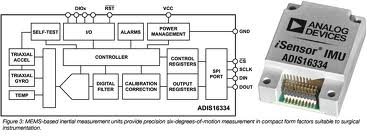Dresden, Germany, February 25, 2013 – ZMD AG (ZMDI), a Dresden-based semiconductor company that specializes in enabling energy efficient solutions, today announces the release of the ZSPM4521 high-efficiency lithium-ion (Li‑ion) battery charger and the ZSPM4523 super capacitor charger for managing charging with photovoltaic sources. As a global supplier of analog and mixed signal solutions for automotive, industrial, medical, information technology and consumer applications, ZMDI enables best-in-class energy efficient solutions for mobile and battery-powered applications with its Smart Power Management technology.
Both the ZSPM4521 and ZSPM4523 are configurable for termination voltages and charge currents to allow optimum charging for a wide range of Li-ion batteries or super capacitors. They can regulate up to 1.5A continuous drive current and use a maximum power point tracking (MPPT) function to extract the maximum possible power from the photovoltaic charging source. Once the termination voltage is reached, the MPPT regulator operates in voltage mode to maintain optimal voltage. The switching frequency is 1MHz , which enables the use of small filter components, resulting in smaller board space and reduced system costs. An integrated I2C™ (trademark of NXP) interface enables the user to set application-specific termination voltages and control charging currents.
The ZSPM4521 has an additional charge timeout feature to protect the Li-ion battery from overcharge. It also offers separate settings for termination voltage and maximum charge current for different battery temperature ranges. It provides Li-ion-specific protection for over-current, over-temperature, over-voltage, under-voltage and charging timeout.
The ZSPM4523 is optimized for super capacitor charging. It provides protection for over-current, over-temperature, over-voltage and under-voltage.
- Maximum power point tracking (MPPT) for optimized charging
- Ultra-low quiescent current, 10µA
- 1.5A continuous output current
- Reverse-current blocking
- Programmable termination voltage and charging current
- Over-voltage and charging-timeout supervisor
- Input supply under-voltage lockout
- Full protection for over-current and over-temperature
- Charge status indication
- I2C™ program interface with EEPROM registers
- Temperature (junction) range -40°C to 125°C
- Package: 16-L PQFN (4mm x 4mm)
ZMDI has expanded its range of capacitive sensor signal conditioning devices with a chip which has 14-bit resolution and 0.25 % accuracy over a range of sensor capacitances and temperatures.
The signal conditioning device can be configured to interface with capacitive sensors from 0.5 to 260pF, with sensitivity as low as 125 atto-Farads (aF) per digital bit.
The part can be used in both single- and differential-input sensor configurations. The device offers a full 14-bit resolution for compensation of sensor offset, sensitivity and temperature.
The ZSSC3123 device is of particularly interest for MEMS-based sensor elements, such as pressure sensors for hydraulic control systems, humidity sensors, and liquid level gauges.
“Responding to sensor system designer needs, we have developed a digital technique to correct both first-order and third-order nonlinearity errors that were difficult or impossible to correct with a pure analogue signal path,” stated Steve Ramdin, product manager at ZMDI.
For more read: ZMDI uses digital chip to improve MEMS sensor accuracy

